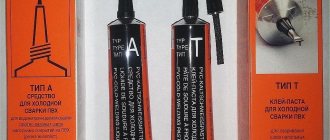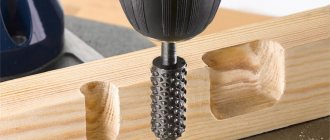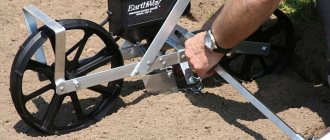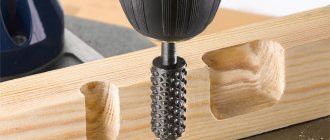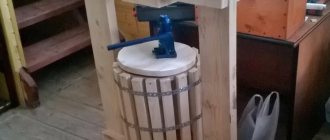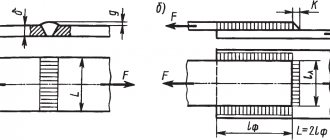After the work on laying ceramic tiles has been completed, you need to learn how to dilute Ceresit grout in order to protect the seams and the treated surface from moisture, dirt, and also to give an aesthetic and finished look to the finish. If you choose Henkel products for work, then there will be no problems, for example, how to dilute grout for Ceresit CE33 tiles, since the same general principles of working with similar dry mixtures apply to this cement-based material, which is popular among builders.
General rules for preparing mortar for grouting ceramic tiles
Of no small importance when working is the method and technology of its dilution, information about which is contained in the instructions for the material. But in some cases, some secrets that specialists with extensive experience know will also be useful.
The classic dilution method is not difficult for a beginner and is suitable for almost all types of grout, mainly cement-based.
To do this you should:
- pour the required amount of dry grout mixture into the prepared container;
- pour water into it in the proportion specified in the instructions;
- mix thoroughly until a homogeneous paste-like mass;
- you can mix either manually or using special devices - for example, a drill with a mixing attachment;
- leave the solution alone to “mature” for five minutes, and then mix it thoroughly again.
It is important to consider that you should not immediately use all the grout mixture prepared for processing joints, since its working time is no more than 1 hour and if the volume of work is large enough, part of the solution will simply disappear, as it will harden before it is used.
It is strictly forbidden to dilute the slightly set mixture with additional water, as this will not bring the expected effect, and the composition will simply be spoiled. It is better to slightly slow down the process of setting the solution by stirring it constantly while working.
Craftsmen who specialize in laying ceramic tiles are, of course, armed with the necessary tools, but for a home craftsman there is no need for extra expenses. Therefore, given that grout solutions are rarely produced in large volumes, it is quite rational to mix everything manually. But if you want to make your task easier, you can use a container with a fairly wide neck and a closing lid and simply mix the solution in it, shaking it vigorously.
How to properly prepare epoxy-based grout?
The process for preparing grout based on epoxy resin is somewhat different. In this case, deviations from the instructions are not allowed at all. At the first stage, the paste is mixed with a catalyst, which are thoroughly mixed, then a special color is added in the form of a powder, if necessary, since initially this grout has no color and is transparent.
After this, all the components of the epoxy grout are thoroughly mixed again and you can begin to work, but be sure to take into account that the mixture hardens very quickly and it is recommended to remove its excess from the surface of the tile immediately.
Rules for selecting shades
Experienced craftsmen do not believe that the colors of tiles and grout should be identical. On the contrary, a darker or lighter shade is visually more attractive.
When decorating a space with tiles with a bright pattern, it is recommended to use transparent grout, because... it will not distract attention from the main print.
Features of working with grout for Ceresit tiles
Tile grout Ceresit CE33 is recommended for joints with a width of no more than 5 mm; if wider ones need to be processed, experts recommend slightly reducing the amount of water, that is, making the solution more dense, which will ensure better adhesion to the surface.
This type of grout has a wide range of colors - more than 25 colors and shades, and is suitable for both external and internal work.
In addition, Ceresit CE33 grout:
In cases where it is necessary to process seams with a width of more than 10 mm, it is recommended to use Ceresit CE40 grout with a high water-repellent effect, which makes its use for external work, primarily for facade finishing, indispensable.
Do you want to buy Ceresit building materials at the best prices in Moscow? Hurry up to place your order!
Grouting the tile joints is the final stage of decoration, allowing you to make the appearance complete and neat. But grout also serves practical purposes - it protects the tiles from moisture penetration, increasing the service life of the coating.
Famous brands
Experts note that the best materials for processing tile joints include the following brands:
- Kiilto;
- Mapei;
- Anserglob;
- Baumit;
- Mira.
Among the companies producing repair materials, one of the leading ones is Henkel Bautechik. The company's product range includes a line of tile grouts called “Ceresit”.
Types of grout
The entire range of decorative mixtures can be divided into two groups. The main criterion for separation will be the base substance on the basis of which the manufacturer makes the product.
Cement
Cement as a basic component is a classic of cladding - it is used not only for laying tiles, but also for its final finishing.
They increase the elasticity of the solution, demonstrate high strength and water-repellent properties. Products with fungicidal components in the composition cope with mold and bacteria. They work effectively even in rooms where there are problems with ventilation.
As a rule, cement-sand grouts are used to process wide joints - from 5 mm or more. Pure cement mixtures are designed to work with narrow joints - less than 5 mm.
Resin
Cement compositions may be unsuitable for grouting tiles in areas exposed to complex external factors. Swimming pools, rooms with high levels of humidity and high traffic - resin-based grouts are used here. Most often, the base is epoxy resins, in some cases - furan.
Quartz sand of different fractions is used as a filler, and a special hardener accelerates the setting process of the solution.
Epoxy and furan grouts have increased strength. They withstand intense mechanical stress and exposure to chemical compounds contained in household cleaning products and detergents.
Epoxy grout is the most popular in everyday life - it is used to treat the seams of kitchen apron tiles, and to finish bathrooms and showers, baths and saunas.
Set of tools for work
Before diluting the grout, you should prepare a simple set of tools that will help you complete the work quickly and efficiently. The set includes:
- protective equipment for the master - rubber gloves, respirator mask, construction glasses;
- a round container for preparing a liquid mixture;
- putty knife;
- drill with mixer attachment;
- bucket with water;
- soft clean cloth and foam sponge;
- scales or measuring container.
In addition to the grout mixture, it is necessary to prepare a solvent. It can be ordinary clean water or latex - you should follow the instructions of the mixture manufacturer.
How to properly dilute grout for joints?
Next, we will consider the rules for preparing decorative mixtures of the four most popular brands in construction.
Ceresit
As an example, let's take Ceresit CE 33 grout, designed for finishing narrow joints of stone, ceramic and glass tiles.
Rules for preparing the solution:
- Prepare water at the rate of 330 mm per 1 kg of dry mixture. Permissible water temperature is from +5 to +30 °C.
- Pour approximately ¾ of the required volume of water into the prepared container.
- Pour the dry mixture into the water according to the specified proportions.
- Stir the mixture well until there are no lumps. For this purpose, you can use a spatula or drill. The drill should be operated at speeds of 400-800 per minute.
- When the composition is mixed, you can add the remaining water so that the mixture acquires the consistency of thick sour cream. If the solution is already plastic, the rest of the water may not be added.
The finished grout should “mature” - this will take about 5 minutes, after which you can begin processing the tile joints.
Cement grout Eunice Color is suitable for filling joints with a width of 1 to 10 mm in rooms with moderate and high humidity, as well as in “warm floor” systems.
- Pour water at room temperature into a container at the rate of 0.25-0.35 liters per 1 kg of dry grout.
- Pour in the cement mixture. A trowel is suitable for stirring this volume. If you need more mixture, it is better to use a drill mixer.
- Stir for several minutes until a homogeneous viscous mass without lumps is obtained.
- After 3-5 minutes of settling the mixture, stir again and apply.
Litokol
Litokol Starlike is an epoxy grout suitable for interior and exterior work with porcelain stoneware, tiles, mosaics and natural stone. The color range of the product includes 97 shades, including a metallic palette.
Can I use grout instead of putty?
Before answering this question, it is necessary to understand the fundamental differences between grout and putty. The grout is used primarily to fill joints; it should penetrate well into all cavities and set quickly in a narrow space. The putty is intended only for leveling surfaces for painting or wallpapering.
The putty will turn out even and smooth only if it is applied in a thin but wide layer. If you fill seams with it in several layers, the surface will become covered with cracks. With grout, the opposite is true - its thin layer quickly cracks, but the thick one remains intact and smooth. Therefore, in fact, both of these solutions cannot be interchangeable due to functional differences.
But some craftsmen claim that grout can be turned into putty. To do this, you need to add any moisture-retaining component to its composition, for example, methylcellulose.
With putty, everything is different - it needs to be given moisture-repellent properties by mixing with oil paint or glue. But the builder must conduct such experiments at his own peril and risk, since there are no such instructions in the instructions for the tools.
How to remove excess grout?
It is better to clean the tiles from excess grout immediately - a flexible rubber spatula is suitable for this, which is not dangerous to run even on the glossy surface of the tile. Final cleaning is carried out after the last seam has been filled. At this stage, return to the very first tile and wipe it with a dry soft cloth or foam sponge.
It is important not to miss the moment and not wait for the grout to harden, especially for epoxy products. Otherwise, you won’t be able to get rid of it simply by wiping and washing the tiles. You will have to buy special acidic removers that react with the components of the grout and remove them from the surface.
Even a beginner can handle preparing tile grout. But it should be taken into account that the quality of the mixture largely depends on its homogeneity and plasticity.
Color
Depending on the color of the tiles laid on the walls of the kitchen or bath, the shade of the grout also depends. Henkel Bautechik offers consumers the following basic range:
- Shades of gray and blue (four options each);
- Green (three shades);
- Lots of beige and brown.
Available in white, black, brick colors.
Video review
When working with tiles, laminate, ceramics, stone, and glass, craftsmen usually decorate the seams. This is the only way to achieve the effect of a completed, neat renovation, thought out to the smallest details. For this, builders often use Ceresit CE 40 joint grout.
If you do not have experience working with such building material, we recommend that you study the rules for its application in advance. For this purpose, the article discusses the Ceresit mixture. The properties of the composition, its advantages, disadvantages, consumption and application techniques are presented. Useful recommendations in the article will help you do the job correctly.
Right choice
Ceresit grouts are on the shelves of all stores selling products for renovation and construction. In order not to make a mistake in choosing the appropriate composition, you should know and take into account some nuances.
- The widest color spectrum is presented in products marked CE 33 and CE 40 - twenty-six and thirty shades, respectively.
- Products marked CE 40, CE 43 and CS 25 are water-repellent and stain-resistant.
- It is possible to achieve effective protection against fungus by using CE 33 and CE 35 products in tandem with CT 10 impregnation.
Experts recommend using the same combination for external wall cladding.
Properties and purpose
Ceresit CE 40 is designed specifically for filling joints between ceramic, glass, and stone tiles. The mixture can be used for both floor and wall slabs in everyday life and industry.
You can grout tile joints:
- on bases subject to deformation - these include plasterboard, wood chip elements;
- in conditions of high humidity: bathrooms, kitchens, showers;
- on surfaces susceptible to temperature fluctuations: terraces, balconies, swimming pools or underfloor heating systems.
The product can be used for interior and exterior work. It is completely safe for health. However, the technician must wear protective gloves and goggles.
Product purpose
German manufacturers, as always, are particularly scrupulous. Among the brands are mixtures for processing gaps with thicknesses:
- Up to five millimeters;
- From four to fifteen mm;
- Up to twenty millimeters;
- Silicate grout, ideal for filling joints between tiles and plumbing fixtures.
Instructions on how to grout tile joints with ceresit ce 40
Grout CE 40 is easy to use. On its packaging there are instructions for use, in which the manufacturer indicates the rules for mashing. It is necessary to work with it at air and surface temperatures from +5 to +30 degrees Celsius. Humidity in the room should be average, not exceeding 80%.
Before work, you need to prepare the base to create conditions for good adhesion. Do not deviate from the instructions so that the result of the work is effective.
We do not recommend applying this mixture to seams in corners and places of possible deformation. For this, it is better to use silicone-based grout.
Tools and surface preparation
We advise you to ensure the correct air temperature in the work area or choose a relatively warm day when working outside. Maintain temperatures between +5°C and +30°C.
The master will need the following equipment:
- a bucket of clean water;
- rubber spatula;
- sponge;
- rags.
All surfaces must be dry and free of dirt. The edges of the tiles, on the contrary, need to be moistened with a damp sponge or rag.
Consumption
A separate issue is the consumption of ceresit ce 40. The exact figure depends on the thickness, width of the joint and the size of the tile itself.
According to the manufacturer, the average consumption is from 0.4 to 0.7 kilograms per square meter. The grout itself is supplied in bags weighing 2 kilograms. We recommend taking the mixture with a reserve.
Work algorithm
The dry mixture is slowly poured into cold water. In this case, the material must be thoroughly mixed to form a homogeneous mass without lumps. Then it is infused for five minutes, and then it is mixed again.
Applying the mass is done like this:
- The solution is applied to the surface with a rubber spatula, carefully rubbing into the seams.
- Excess mixture can be collected with a spatula before it hardens.
- Ten minutes after application, the surface is washed with a sponge of medium humidity so that the seam does not wash out.
- Plaque on the tiles can also be easily cleaned with a dry soft cloth.
- If grouting is done outdoors, the surface must be protected from precipitation throughout the day.
We recommend watching the video instructions for using Ceresit grout. This will help you avoid basic mistakes when performing the task:
After working for 24 hours, ensure the seams are protected from drying out: exposure to direct sunlight, weathering, overheating. Moisture on the grout is allowed no earlier than a week after its application.
Reviews
Durable grout for small joints. I used it for tiles in the bathroom, for the sixth year now the tiles are like new. Not a single crack or chip, the main thing is to mix and apply correctly.
Vladimir Kartashenkov, 42 years old: “I bought the grout along with the tiles on the advice of my friend the master. For the blue floor in the kitchen, I chose a dark blue mixture, because the light solution darkens unevenly over time. Among the advantages of Ceresit CE 33 I would like to note its easy dilution and low price. A small minus is the packaging, which is quite fragile due to the thin paper.
” Ruslan Nurmagomedov, 33 years old: “I was doing renovations in the bathroom, and when the time came to choose a grout, I decided to trust the consultant in the store and settled on Ceresit CE 33. My intuition did not let me down: the mixture turned out to be easy to use, I was able to easily wash it off the surface . The mortar holds well in the seams; nothing has come off in a year. The only thing I didn't like was the rather complicated breeding.
” Sergey Kuteynikov, 24 years old: “If you follow the operating instructions and mixing proportions, Ceresit CE 33 solution will be the ideal completion of the laid tiled cladding. All that remains is to choose a store and, if necessary, contact a grouting specialist.”
